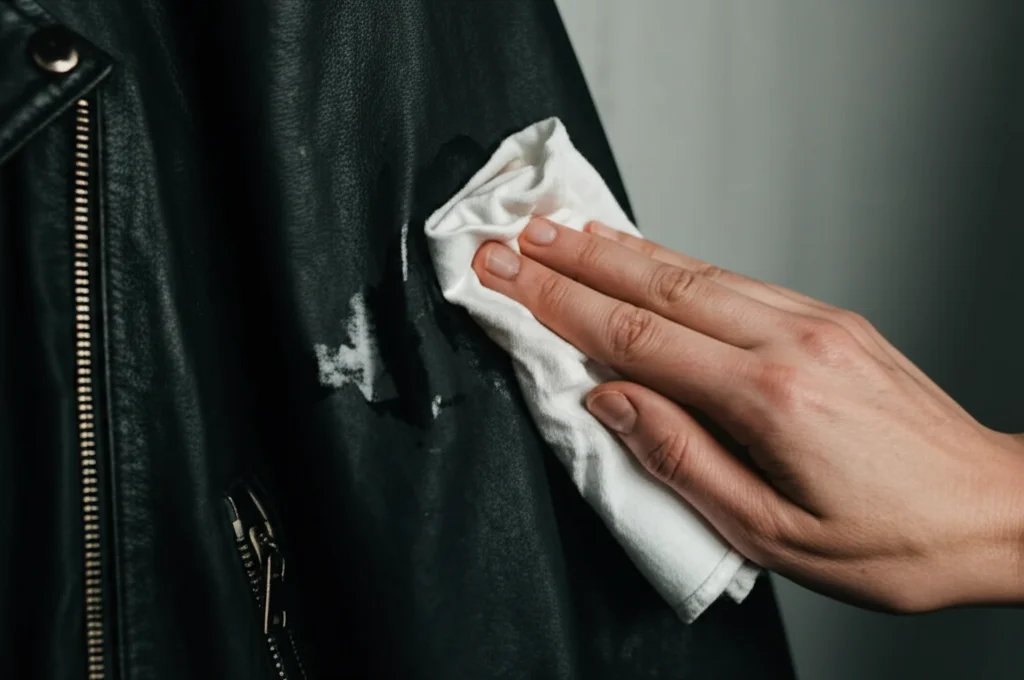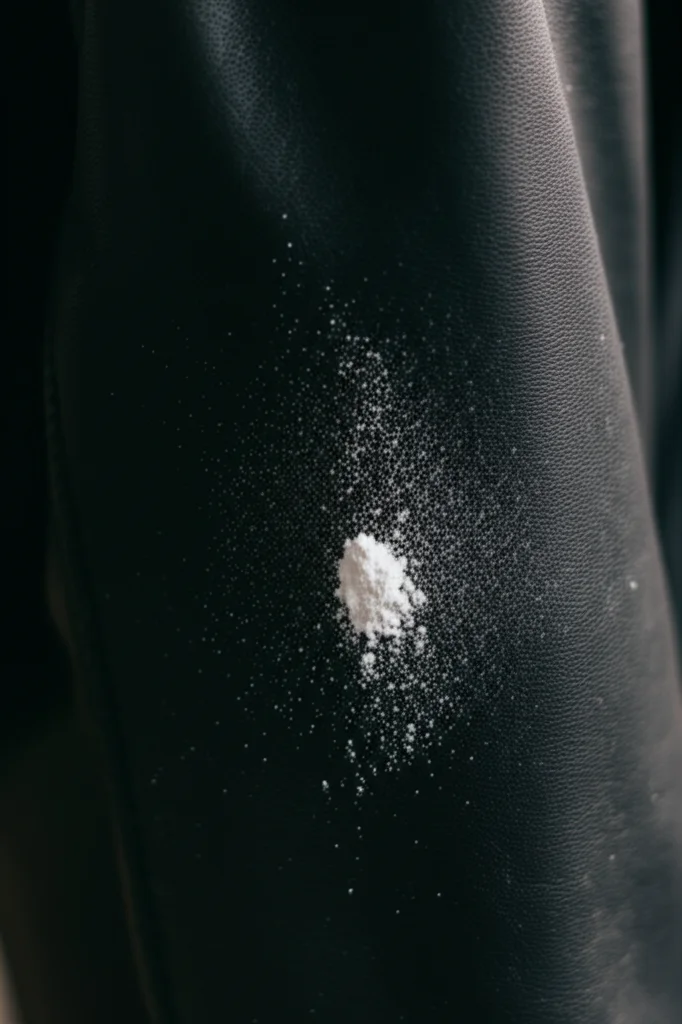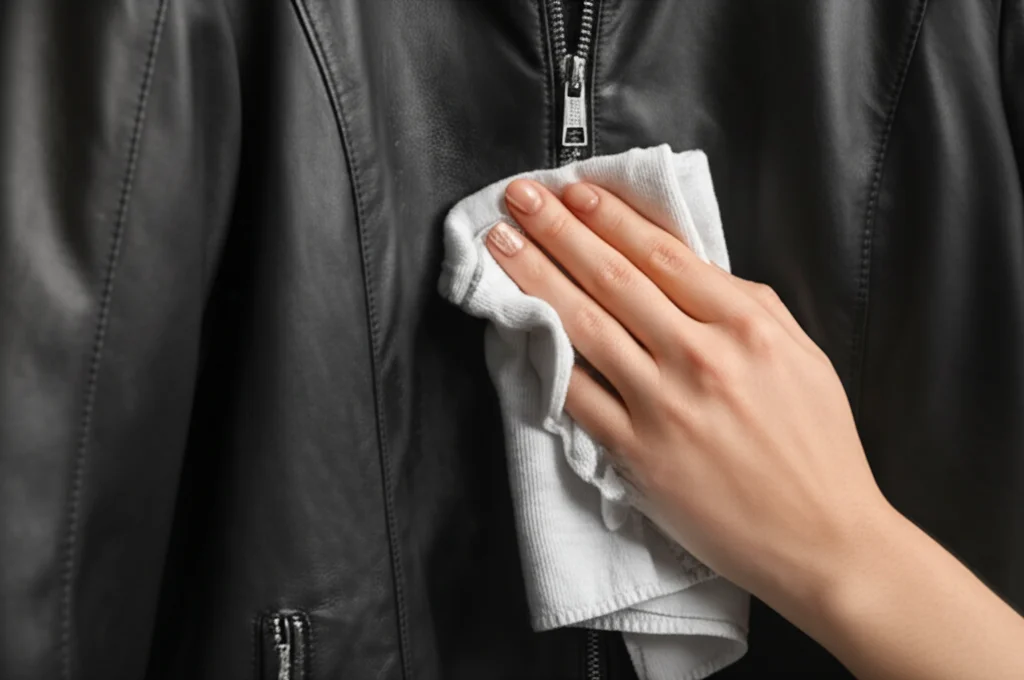Oops! Spills Happen: How to Safely Clean Your Leather Jacket at Home



That heart stopping moment, a splash of coffee lands on your beloved leather jacket, or perhaps a greasy fingerprint appears seemingly out of nowhere. Don't panic! While taking your jacket to a professional cleaner is always an option for serious issues, many common spills and spots can be safely tackled at home with the right approach and a gentle touch.
Knowing how to react quickly and correctly can prevent a minor mishap from becoming a permanent stain. This guide focuses on practical, safe methods using readily available items, ensuring you can care for your investment piece confidently between professional cleanings. Remember, the key principles are always gentleness and prompt action.
The Cardinal Rules of Leather Cleaning
Before tackling any specific spill, keep these overarching rules in mind:
- Act Fast: The sooner you address a spill, the less likely it is to set permanently.
- Blot, Don't Rub: Rubbing can spread the stain and damage the leather's surface or finish. Always use a gentle blotting motion.
- Test First: Always test any cleaning solution (even water or specialized cleaner) on an inconspicuous area first, like inside a hem, cuff, or facing, to ensure it doesn't cause discoloration or damage.
- Use Soft Cloths: Microfiber cloths or clean, soft cotton cloths are best. Avoid abrasive materials.
- Air Dry Naturally: Never use direct heat (hairdryers, radiators, sunlight) to dry wet leather. Let it air dry slowly at room temperature.
- Condition After Cleaning: Cleaning can sometimes strip natural oils. Consider applying a suitable leather conditioner once the area is completely dry, as detailed in our essential care guide.
Tackling Common Spills at Home
Here's how to approach some frequent culprits:
1. Water Spots or Light Rain
Ironically, plain water can sometimes leave spots on leather as it dries, especially on untreated leather.
- Method: If caught in light rain or splashed with water, gently blot the entire jacket surface evenly with a clean, dry cloth. Don't just focus on the wet spots, aiming for uniform dampness can help it dry more evenly without distinct water marks. Hang it on a padded hanger to air dry completely.
2. Non Oily Liquid Spills (Coffee, Tea, Juice, Soda)
These require quick blotting.
- Method: Immediately blot the spill with a clean, absorbent cloth or paper towel. Work from the outside of the spill inward to avoid spreading it.
- If a Mark Remains: Slightly dampen a clean cloth with distilled water (tap water can sometimes contain minerals that spot). Gently wipe the stained area. Avoid soaking the leather.
- Stubborn Spots: If water alone doesn't lift the mark, you might try a specialized leather cleaner. Remember to test it first!

3. Oil or Grease Stains (Food, Lotion, Makeup)
Oil stains need an absorbent powder to draw them out.
- Method: Do NOT use water, as it can spread the oil. Immediately cover the fresh stain generously with an absorbent powder like cornstarch or talcum powder (plain, unscented). Gently pat it down.
- Let it Sit: Leave the powder on for at least a few hours, or preferably overnight. The powder will absorb the grease.
- Brush Off: Gently brush the powder off with a soft cloth. Do not rub it in.
- Repeat if Needed: For stubborn stains, you might need to repeat the process.
- Older Stains: Set in oil stains are much harder to remove and may require professional help.

4. Ink Marks
Ink is notoriously difficult. Act extremely quickly.
- Fresh Ballpoint Ink: Sometimes, carefully dabbing (not rubbing) with a cotton swab dipped in isopropyl alcohol can lift fresh ink. Test VERY carefully in a hidden spot first, as alcohol can remove dye or finish. Dab lightly and use a clean part of the swab frequently.
- Other Inks / Set Ink: These almost always require professional attention. Home remedies often spread the ink or damage the leather.
- Deeper Dirt: If needed, use a cloth slightly dampened with distilled water. For more ingrained dirt, use a reputable leather cleaner following the product instructions and remembering the golden rule: test first!

After Cleaning: The Final Touches
Once you have treated a spot and it has fully air dried:
- Assess the Area: Check if the spot is gone or significantly reduced.
- Condition (Optional but Recommended): Spot cleaning, especially with water or cleaners, can dry out the treated area. Apply a tiny amount of appropriate leather conditioner to the cleaned spot and surrounding area to restore moisture and blend the finish.
- Buff: Gently buff the area with a clean, dry cloth.

When to Call the Professionals
While these home methods work well for many minor incidents, know when to seek expert help. Always consult a professional leather cleaner for:
- Large or deeply set stains
- Unknown stains
- Ink stains (especially non ballpoint or set in)
- Stains on delicate leathers (like suede or nubuck)
- Mold or mildew issues
- If you are unsure or uncomfortable tackling the stain yourself
Trying aggressive home remedies on tough stains often does more harm than good.
Confidence in Care
Spills happen, but they don't have to spell disaster for your favorite leather jacket. By acting quickly, using gentle methods, and knowing when to stop and seek professional help, you can handle many common cleaning tasks at home. Proper care not only keeps your jacket looking great but extends its life, allowing it to remain a treasured piece for years to come.
Have you successfully tackled a tricky spill on your leather jacket? Share your tips or cleaning questions in the comments below!
Subscribe to our Newsletter
Get the latest posts and updates delivered straight to your inbox.